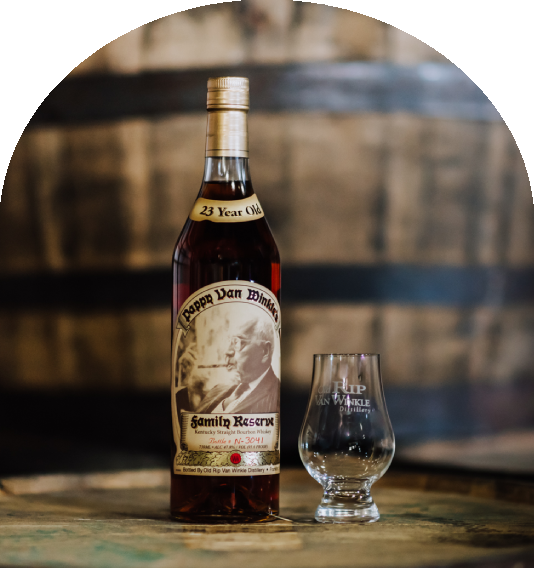As sisters we are often asked what is the story behind our family rings, so we thought we would share this story with you to give you some more insight into our family heritage beyond bourbon. These rings are more than a long-standing family tradition passed down over generations, they’re a piece of family tradition we can hold on to and cherish, much like this business itself.

The “Van Winkle Ring”, at least that’s what we call it, has been named such due to the fact that most members of our family wear one, a custom that was started when our great grandmother, “Nana” had one made for her husband “Pappy”, possibly back in the ’20s or early ’30s.
The story goes, that a man owed Pappy some money and couldn’t pay up, so he gave him a diamond instead. Sometime later, our great grandmother, had it put into a handsome gold ring, the diamond in the center and ruby and sapphire on either side. Pappy always wore that ring and was never seen without it.
At one point, the ruby and sapphire were thought to be fake, which makes for an even better story. It also led to much conjecture, until the ring was taken down to Brown-Waterhouse-Kaiser (a highly reputable jewelry design firm in Louisville at the time) where the jeweler pronounced the stones real, just in an old-style cut.

It then became a tradition for each family member to receive a ring when he or she came of age or married into the family. Or in our case, at the age of eighteen and again at twenty-one.
There are most likely lots of names for this style ring that our family calls “The Van Winkle Ring.” In Europe, they were sometimes called “Count” rings or “Gypsy” rings. As someone once said, “maybe they were called “Gypsy” rings after the gypsies stole them from the Counts.”
Most recently, still trying to get the story right, the ring was taken to the jeweler, John Moore, whose family has been in business since 1951. John was able to shed some light on this type of ring. Moore explained that “during hard times and especially during the Depression and post-Depression, it was common to pay someone with a stone, as money was scarce. This style ring called a “dimple set” was popular with men because the stones were set down into the gold and burnished over, making the ring less flashy and therefore more masculine.” He also said that men didn’t like prongs because they would snag and bend and that the stones most often used were garnets because of their dark blood color, again more masculine than rubies.
And so you must be wondering, what about Pappy’s sapphire and ruby? Are they real or fake? After a long look, John Moore said it was very hard to tell whether they were real or synthetic.
What? Pappy’s stones might be fake after all? Mr. Moore explained that “during the Art Deco era, getting a good match and a good cut was more important than whether the stone was natural or synthetic. Back then, the important thing was getting the job done. A lot of jewelers just didn’t care. They did what was easiest.

For those of you who know about Pappy’s nature, you’ll see the irony in this situation. For a man who believed so strongly in quality over profit and producing the best possible product for the consumer, it is a bit of an oxymoron to think that he was wearing what was very possibly a fake ring.
Well at least we know that the original transaction that started this tradition does still hold its value and in fact, Pappy’s diamond was certifiably real. As Moore confirmed, this is much easier to identify as a “late Old Mine or early Old European cut, probably from the 1800s. It is very real."
But the debate over fake diamonds versus real doesn’t really matter now, does it? It’s the sentimental meaning that holds the greatest value to us as it maintains a family tradition we can continue to pass down to future generations of Van Winkles.










